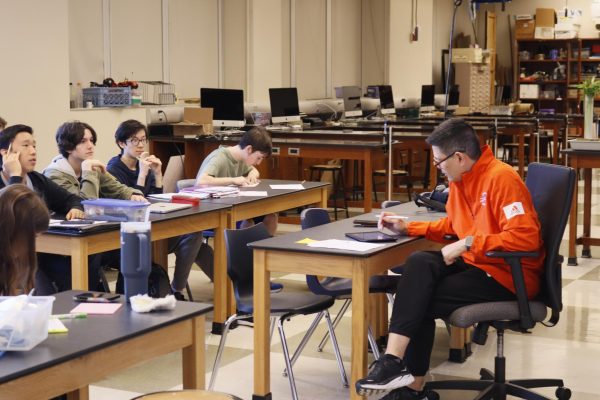The Significance of Seasonal Sadness
During a certain season, some may notice their friends, family, and even themselves becoming more depressed. According to Boston University, around 10 million Americans are affected by seasonal depression. Seasonal Depression, also known as Seasonal Affective Disorder (SAD), is when individuals’ moods are affected by the change in season or weather. This could be from fall to winter or even winter to summer. Winter brings cooler temperatures and less daylight which can affect how people are feeling. Many people experience amplified feelings of sadness and tiredness. On the other hand, warmer weather can bring hardship in different ways, such as loneliness, longer days, and increased heat.
“Some people become sad when it becomes warm outside because they have to face more people when people are outside, they have to communicate when they don’t feel comfortable,” said Chandra Brown, a counselor at CHS.
The intensity of a school environment can also add to the stress felt by students during the winter months. Finals play a large role in the stress of high schoolers around the start of winter. The high-stakes testing they are experiencing in their classes can cause them to try and cram all of the semester’s material into a short period of time. Doing this can cause teens to burn out and become even more stressed.
“I think that our school environment, and the academics here are very rigorous when we want our students to go out into the world and be successful. Things have to be rigorous, but we also want to make sure we’re being careful in helping students find a balance,” said Sheila Powell-Walker, Clayton High School’s Social Worker.
Brown thinks that this environment of tests that determine a large portion of students’ grades should be lessened. She believes that students should be able to demonstrate their knowledge in subjects in ways other than large tests.
“I did notice that a lot of kids became physically ill from being overworked, overstressed and over anxious about the upcoming finals,” said Brown. “I almost want to shift the mindset behind finals, and create some other way to assess kids abilities and see if they mastered the curriculum or items at hand.”
Some ways to help ease the feeling of Seasonal Depression include going outside more often, taking the time for self care, and talking to a trusted person.
“We all need those times where we can sort of check out and just focus on ourselves. I think if we do a good job of doing that, all year, then when stressful moments happen, we can manage them a little bit better,” Dr. Powell-Walker said.
Students should also stay in tune with their behavior and notice when their actions become more harmful.
“Be cognizant of the fact that you are starting to become a little bit more tired and you are starting to isolate yourself and do some self checks, like what’s making me do these? What are some things I can do to get out?” said Dr. Brown.
In the future, Brown hopes for time to be put aside to educate students and staff on challenging topics like Seasonal Depression and provide coping strategies. With the new extra time built into teachers and students’ schedules, Brown suggests workshops to give information.
“We can create workshops for kids at least once a week that speak to some of the things that they may experience during this time. These can teach strategies and provide support for kids and families.”
Some people may be experiencing the symptoms but do not know exactly what is causing them. Educating teens and adults alike can spread awareness and help give strategies and solutions.
A $50 or more donation includes a subscription to the Clayton High School Globe 2024-2025 print news magazine.
We will mail a copy of our issues to the recipients of your choice.
Your donation helps preserve the tangible experience of print journalism, ensuring that student voices reach our community and that student democracy thrives.

Pronouns: she/her
Grade: 12
Years on staff: 3
What's an interesting fact about you? I have a dog named Chewy!
What's your favorite movie? Crazy Rich Asians.
What...

Pronouns: she/her
Grade: 12
Years on staff: 3
What's an interesting fact about you? I love to bake!
What's your favorite movie? Thirteen Going on Thirty.
What do...

Alyssa Blanke is a junior and is the Sports Section Editor for the Globe. She is a part of many communities at Clayton, including tennis, best buddies and is also the co-head of...





